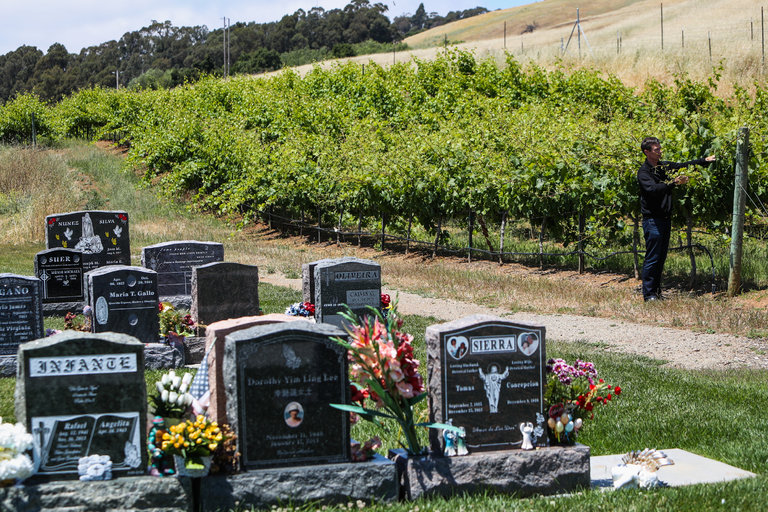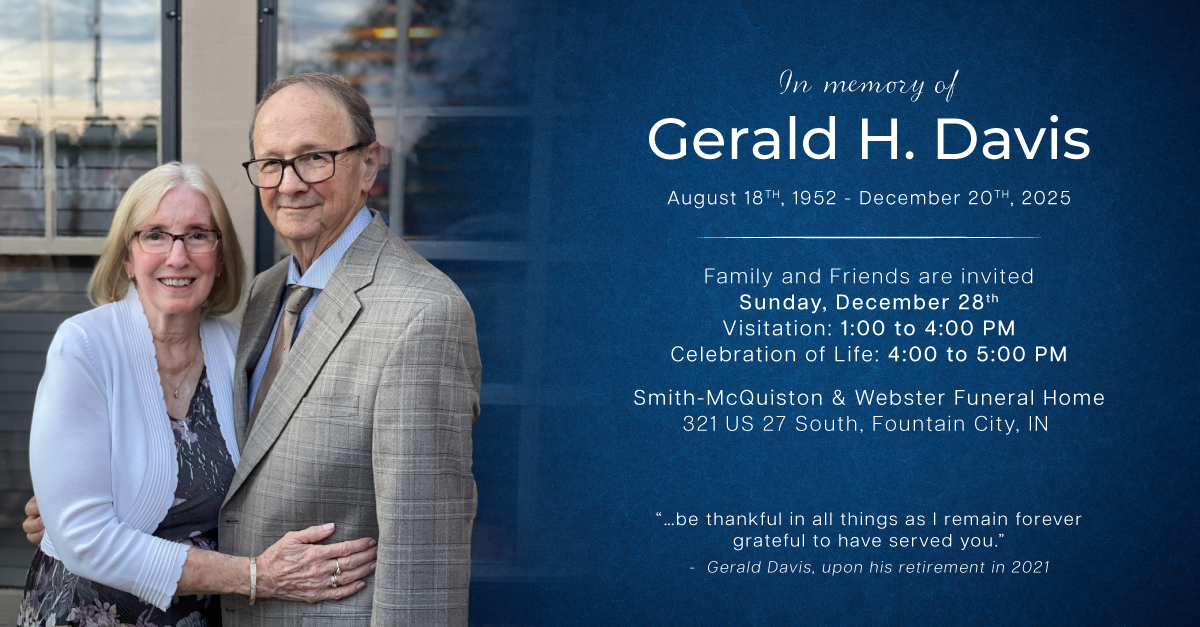Turning Cemeteries Into Wine at a California Diocese
Article originally published by: NY Times
For an additional $1,000, a family can have a loved one buried near the chardonnay vines glistening in the sun, or if they prefer, near the pinot noir vines at a cemetery here in an East Bay suburb of San Francisco.
The vines were planted 10 years ago as a less expensive and more water-frugal alternative to grass at the Holy Sepulchre Cemetery here.
But this is California, the land of gold and grapes, and the ornamental grapevines are now producing prizewinning wines.
“It was kind of like Jesus’ miracle when he made water into wine,” said Bishop Michael C. Barber of the Roman Catholic Diocese of Oakland, which oversees 16 acres of grapes at this cemetery and two others. He became the bishop in 2013, when the wine was called Cathedral of Christ the Light before church officials came up with Bishop’s Vineyard, a snappier label for a larger market.
The grapevines serve another purpose. “The cemetery doesn’t seem like such a sad and fearsome place when you go there and see the vines,” Bishop Barber said.
These are challenging times for cemetery owners, who are struggling to cover their costs, primarily upkeep of the land. The burial habits of Americans have changed, and nearly half are cremated rather than buried. In 2015, there were 1,300 burials at the Hayward cemetery, down from nearly 2,500 in 1980.
“You just drive by cemeteries like they’re a museum,” said Robert Seelig, the chief executive of Catholic Management Services, which oversees the diocese cemeteries. “People are attracted to wine. It draws them into a cemetery and attracts you to a different story line.”
American cemeteries have developed creative ways to draw visitors, holding horror movie nights, concerts in mausoleums, fun runs and yoga classes in chapels. Cincinnati’s Spring Grove Cemeteries hosts bird walks, twilight tours, family fun nights, an annual dog day and designated times for Segway riders. In Bridgeport, Conn., people still stroll the pathways around the pond atMountain Grove Cemetery to admire the flowering dogwood trees in the spring or the brilliant foliage in the fall.
“Cemeteries are reverting to old practices,” said Keith Eggener, a professor of architectural history at the University of Oregon and the author of a book about American cemeteries. In the 19th century, “cemeteries were full of beautiful trails,” Dr. Eggener said. “People would take guests and have picnics. A cemetery was considered a major ornament to a city.”
There is a certain symmetry to the Catholic church’s making California wine; Spanish missionaries brought grapes and winemaking to the state, probably in late 1700s. The vines also have a spiritual appeal: Wine is a crucial part of the Catholic Mass and the inspiration for Christ’s first miracle, at the wedding at Cana.
When Bishop Barber was a student at the Jesuit novitiate, a training seminary in Los Gatos, Calif., he picked grapes with a small cutting knife in the college’s vineyards, planted in the 1880s, as did Jerry Brown, the current governor, who was once a student there. During the first hour of picking, they would pray in silence until “the field boss blew the whistle,” the bishop said.
“One nice benefit: Every night at supper they served us some wine with dinner made with grapes previously picked from the same vineyard we worked on that day,” he said.
Planting cemetery grapevines in 2006 was a small part of Mr. Seelig’s solution for a money-losing operation.
“I wondered if there was a disconnect where cemeteries were no longer relevant to the modern world,” Mr. Seelig said. “What I learned is that the model had changed.” The Catholic church’s model “needed to be updated,” he added.
He cut costs, bought a funeral home with a crematory and began marketing cremations with traditional burials to counter what he saw as “push-button fix for grieving.” The grapevines were a small part of the plan.

At $50,000 an acre for planting grass, Mr. Seelig wondered, “could we plant something else?” He thought about “the body and blood of Christ,” he said. “I wasn’t going into the wine business. I was thinking of the nice foliage.”
An acre of grapevines cost only $17,000 to plant.
In 2013, church officials approached Shauna Rosenblum of Rock Wall Wine Company to process the cemetery grapes for altar wine, which need not be “that good,” Mr. Seelig said. She worked with Jim Ryan, a wine consultant who had been with Firestone Vineyards and Concannon Vineyard, two well-known winemakers. Mr. Ryan is now the general manager at Rock Wall.
That first year they put all the cemetery grapes into a press to make rosé. But they were amazed when they evaluated some of the fruit. The chardonnay and pinot noir grapes from the Hayward cemetery were of “outstanding quality,” Mr. Ryan said. And the cabernet and zinfandel grapes from the nearby Holy Cross Cemetery were “fantastic.”
They approached Mr. Seelig with their idea: Why not make serious wine?
This year, a Bishop’s Vineyard cabernet sauvignon won a silver medal at theMonterey International Wine Competition. Its cabernet and zinfandel won silver medals in the San Francisco Chronicle Wine Competition.
And so the cemetery wines have become a start-up business. Unlike most, it is a nonprofit, giving most of its products — 7,200 bottles of altar wine — to 45 churches. It has donated $35,000 in scholarships to parochial schools. Like most start-ups, it is not yet turning a profit, but the church is investing in the wine business and expects to break even this year. The annual costs run up to $150,000. Mr. Seelig considers it a good investment.
The diocese has a Bishop’s Vineyard website, a Facebook page and a blog, Grapes & Graveyards. There are friends and family discounts and a wine club with quarterly packages at three levels: a bishop’s bunch (two bottles), a cardinal’s collection (four) and a pope’s parcel (six).
Wine tastings are held at parishes and annually at the cemetery. Bishop Barber had one at his home to select the best wine for church altars. “You’re not supposed to be thinking of the wine,” he said. “You’re supposed to be thinking of our Lord.”
At the cemeteries, the grapevines have become a destination.
“It’s like dynamic pricing of a baseball game,” Mr. Seelig said. You pay for seating “in the bleachers,” but it is more expensive “to be by home plate.” People, he said, “like ambience.” It costs $5,000 to $6,000 for a burial plot near the grapes, $1,000 more than those across the street.
“At our cathedral gift shop, we sell rosaries, statues of Mary and, oh, by the way, bottles of our wine,” Bishop Barber said.
Cover image: Robert Seelig, the chief executive of Catholic Management Services, checking the grapevines at Holy Sepulchre Cemetery in Hayward, Calif., last month. Credit: Gabrielle Lurie for The New York Times
[H/T NY Times]




